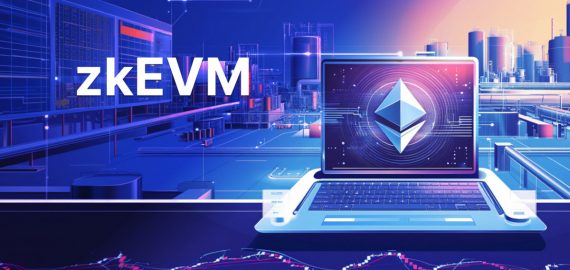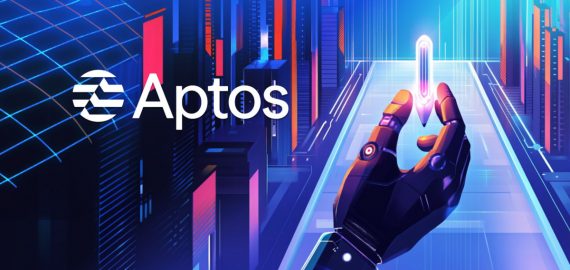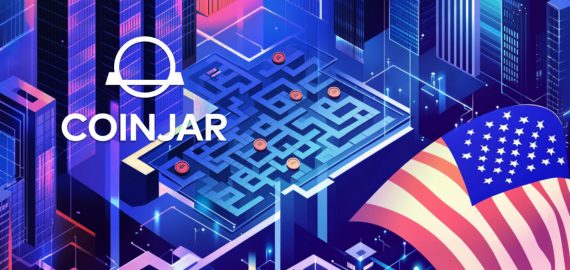Scaling To Meet The Demands Of Mass Adoption. Bringing Scalability To DApps


In Brief
Ethereum’s transaction speed is currently limited to 15 transactions per second, but scalability improvements like Layer 2 rollups and account abstraction are aiming to increase TPS and simplify user experiences. These advancements, along with chain abstraction, are key to overcoming barriers to mass blockchain adoption by improving transaction speed, security, and usability.

Fifteen. It’s the high side of average for the number of transactions Ethereum currently handles per second (TPS). This number can move slightly depending on the type and size of a transaction – the theoretical max is 173 since the Dencun upgrade – but in general Ethereum processes around 15 transactions per second.
This constraint is due to several factors, notably related to maintaining security and decentralization of the L1 network. However, this number is not set in stone. L2 rollup frameworks like Optimism, Arbitrum, and zkSync, along with chains using these frameworks, are quickly providing increased scalability to Ethereum. By processing transactions off-chain and submitting them in optimized batches, more transactions can fit into each block, increasing overall TPS.
Eventually, through additional optimizations to maximize data processing, compression, and storage, scaling TPS into the thousands is the goal for Ethereum. It’s one of the biggest challenges the community is tackling today, and it’s necessary for broader adoption.
Transactions need to get faster. Everything from trading applications to payment solutions to multiplayer games relies on faster transaction completion. Users have come to expect this type of speed for all types of online data delivery, and decentralized platforms need to deliver comparable speeds for web3 mass adoption to take hold.
What Is Mass Adoption?
We’re all waiting on that “killer application” to turn the tide and onboard the next 100 million users. Maybe it’s a payment solution that works as easily as a credit card, or a digital ticket that can be purchased and scanned at the gate for instant event entry, or a reward token that millions of people receive for writing posts on a popular platform.
In fact, all of these ideas, and many more like them, already exist and are “usable” today. But we aren’t much closer to mass adoption than we were 5 years ago. Why? Here are a few reasons:
- Blockchain is hard to use. It’s still hard for everyone, from technically savvy folks to that grandma you’d love to onboard. The UX is not intuitive, and the use of multiple chains and rollups for increased speed creates fragmentation and confusion for users.
- Blockchain is intimidating. With all of the scams and hacks, it is scary to trust applications and sign transactions, knowing that your funds may all be lost in a single click.
- Blockchain is slow. The underlying TPS limits within a secure and decentralized network are a major pain point.
In order to get to blockchain mass adoption, or indeed crypto mass adoption, we need to address each of these issues individually. However, we can make progress on all of them by addressing one primary concern: scalability.
Why Scalability Matters
Scalability is about more than just speed. It is also about reaching more users, handling different types of transactions, and supporting a highly performant and highly secure environment. A blockchain at scale provides solutions to so many problems, reducing inefficiencies in our global financial systems and empowering people to be their own banks and control their own financial destinies.
However, to realize this potential, decentralized applications must be fast, safe, and easy to use. dApps must be able to support all types of users as they navigate multiple chains and manage their accounts across these chains. dApps must abstract away a lot of the underlying complexity inherent in the blockchain environment so that users can understand what they are doing and feel secure with all of their financial transactions.
Simplifying Blockchain Experience With Account Abstraction
One of the most daunting aspects for new Blockchain users is the concept of the account. Not only are public account numbers exceedingly long and cryptic (by design), private keys must be used for signing transactions, and users must keep these keys safe – along with the seed phrase for restoring an account – to protect their crypto. To send a transaction, an account must have a certain amount of ETH (or other native token depending on the chain) to pay for the gas fees for any transaction.
These account principles are foreign concepts to most, and the idea of keeping track of everything, keeping it safe, and even acquiring ETH for gas can feel overwhelming. These account creation hurdles prevent many users from proceeding on their blockchain journey.
Account abstraction (AA) removes a lot of these hurdles. With AA, smart contracts replace regular externally owned accounts. Because smart contracts are much more flexible and can be programmed for different use cases, new features can be added for account management and ease of use. For example, AA allows for other tokens (rather than just the native token like Bitcoin or ETH) to be used to pay for gas. Sponsored transactions can also be introduced, where applications pay gas fees rather than users. In addition, AA can provide account recovery features so that keys can be backed up or multiple people can be assigned to manage an account.
These types of features provide additional security while abstracting away difficulty, making onboarding easier and helping increase the number of users. While account abstraction can scale new user acquisition by removing account barriers, chain abstraction can help scale the entire ecosystem.
Chain Abstraction – A Catalyst For Blockchain Mass Adoption
Ethereum’s rollup-centric roadmap has provided the scalability blueprint since 2020. In 2024, we’ve seen it advance as rollups continue to launch and attract users. Transactions on rollups are much cheaper and faster, and applications have been launched on these rollups to provide expected and novel DeFi use cases.
The problem is fragmentation. There may be a better incentive program on a certain chain or an app you want to use that is only available on a certain rollup. As a user, you need to remember the chain where you made a transaction, then potentially find a bridge to move a token to a different chain to use a different app with a different gas token. Things get muddy quickly.
Chain abstraction is designed to clear up this complexity and fragmentation. Interfaces are being designed to provide unified views for actions across many different chains. Users will be able to view transactions across chains, visit applications easily, and move tokens back and forth without worrying about the underlying chain. The user doesn’t need to know the chain they received their USDC on, only that the USDC has arrived safely in their account.
The challenges of chain abstraction will be tackled by software that can combine cross-chain transactions into one seamless interface. We are already seeing this in some portfolio management software and wallet apps, and multichain block explorers will also play a pivotal role in showing the overall picture of transactions as they traverse multiple chains.
The Future Of DApp Mass Adoption
With scalability in place, blockchain and cryptocurrency mass adoption becomes much easier. Transactions are faster and cheaper, complexities are abstracted away, and dApps can become more like the apps we interact with every day on our phones.
Most people don’t think about which data center is serving their app data or what they will do if they lose their account password. They don’t think much about speed either unless, of course, the app is too slow. Then they just don’t use it. The same should be true for blockchain interactions. As speed and scalability become afterthoughts, the remaining barriers to blockchain entry will become much easier to handle.
Disclaimer
In line with the Trust Project guidelines, please note that the information provided on this page is not intended to be and should not be interpreted as legal, tax, investment, financial, or any other form of advice. It is important to only invest what you can afford to lose and to seek independent financial advice if you have any doubts. For further information, we suggest referring to the terms and conditions as well as the help and support pages provided by the issuer or advertiser. MetaversePost is committed to accurate, unbiased reporting, but market conditions are subject to change without notice.
About The Author
Igor Barinov is an award-winning blockchain expert with over 12 years of experience, known for his pioneering work in interoperability, proof of stake consensus, and federated blockchains. He leads Blockscout, an open-source block explorer that supports over 600 EVM-based networks. Barinov has played pivotal roles in POA Network, Gnosis Chain, and xDAI, and has a track record of success in hackathons at events like Consensus and the Texas Bitcoin Conference.
More articles

Igor Barinov is an award-winning blockchain expert with over 12 years of experience, known for his pioneering work in interoperability, proof of stake consensus, and federated blockchains. He leads Blockscout, an open-source block explorer that supports over 600 EVM-based networks. Barinov has played pivotal roles in POA Network, Gnosis Chain, and xDAI, and has a track record of success in hackathons at events like Consensus and the Texas Bitcoin Conference.

















































